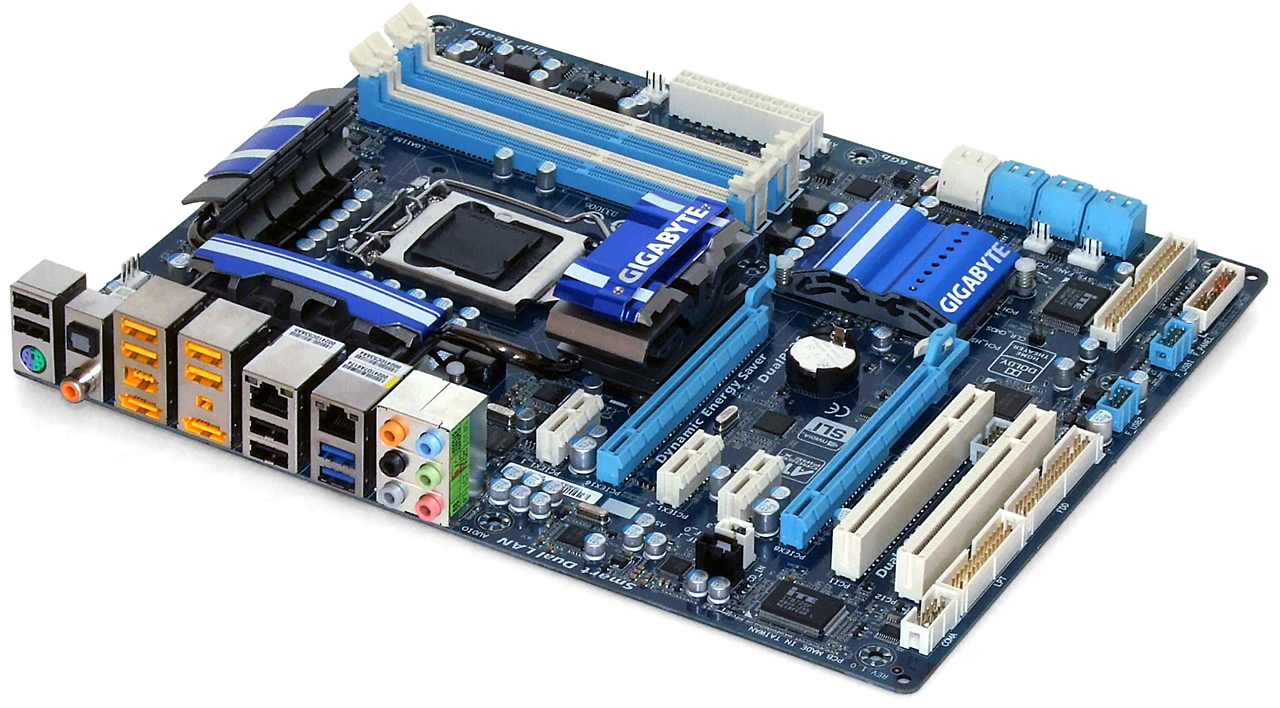USB 3.0 Performance: Two Solutions From Asus And Gigabyte
New Motherboards From Asus And Gigabyte
Always trying to stay on the leading edge of hardware development, the first challenge motherboard manufacturers faced in adopting any high-bandwidth controller for Intel’s latest platform is that the chipset doesn’t have a suitable high-bandwidth interface. The 16 lanes of PCIe 2.0 provided by LGA 1156 processors are normally tied to graphics card slots, and any additional PCIe connections must be made through the P55 PCH at a half-rate 2.5 GT/s. A single 5.0 Gb/s PCIe 2.0 lane would have been adequate for USB 3.0, but P55 has none.
Asus’ solution is to add a PLX PCIe bridge, which can be seen in the photo above as the large IC with a silver logo to the left of the power and reset buttons. The PLX bridge converts the P55 Express chipset’s four 2.5 GT/s lanes into two 5.0 GT/s lanes, making it possible for Asus to host its USB 3.0 and SATA 6.0 GT/s controllers at full PCIe 2.0 bandwidth. While today’s article is limited to USB 3.0 implementation, we’ll communicate more details about this P7P55D-E Premium motherboard in a future roundup.
At two-thirds of the price of its Asus rival, Gigabyte’s P55A-UD4P cuts costs by using the processor’s PCIe 2.0 connections to host its high-bandwidth controllers. Two of the primary graphics card’s 16 PCIe lanes supply its USB 3.0 and SATA 6.0 Gb/s controllers, and Gigabyte disables six more lanes to make the upper slot an effective x8 interface. The USB 3.0 and SATA 6.0 Gb/s controllers revert to the chipset’s 2.5 GT/s lanes whenever two graphics cards are installed, to preserve the x8 transfers each graphics card needs for optimal CrossFire or SLI performance.
Thus, users with a single graphics card must sacrifice half of its peak bandwidth to enable 5.0 Gb transfers to the USB 3.0 and SATA 6.0 Gb/s controllers, while those with two cards must live with 2.5 Gb/s bandwidth limits on USB 3.0 and SATA 6.0 Gb/s controllers. Neither of these sacrifices is huge or even noticeable on most of today’s hardware, yet anyone trying to future-proof their system could be left cold.
Knowing that some users would rather pay more than sacrifice performance credentials, Gigabyte has been showing off its upcoming P55A-UD7 motherboard with PLX and nForce 200 PCIe bridges. The company has yet to announce the new product’s launch date or price.
Get Tom's Hardware's best news and in-depth reviews, straight to your inbox.
Current page: New Motherboards From Asus And Gigabyte
Prev Page Just Another New Interface? Next Page Test Settings And Hardware

